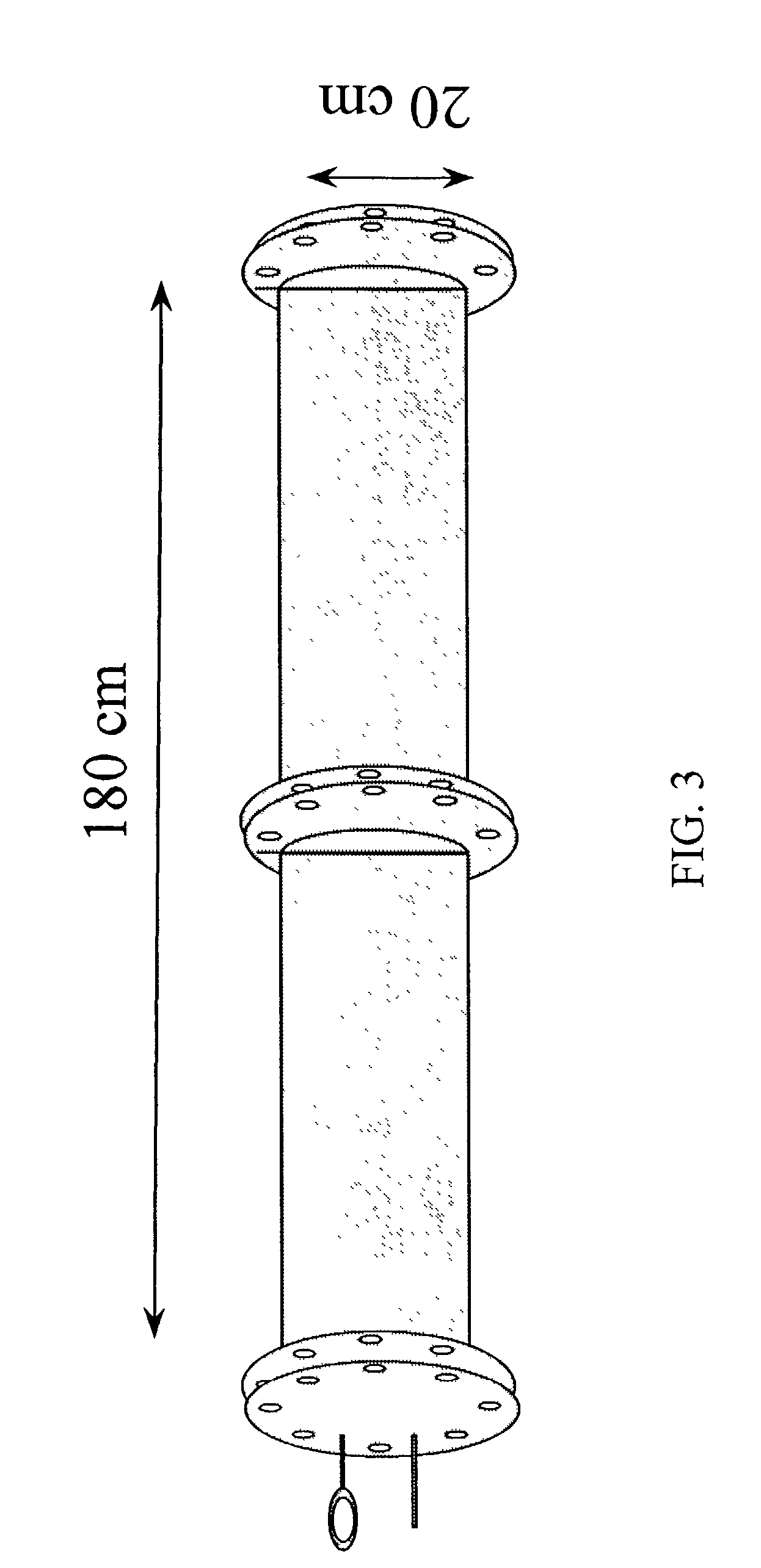Chromosome doubling method
a chromosome doubling and method technology, applied in the field of plant science and genetics, can solve the problems of inconsistent chromosome doubling effects of colchicine, laborious process, unreliable and hazardous,
- Summary
- Abstract
- Description
- Claims
- Application Information
AI Technical Summary
Problems solved by technology
Method used
Image
Examples
example 1
Breeding System for Production of Doubled Maize Haploid Inbred Lines
[0068]The invention provides a system for inducing doubled sectors on flowers of grasses to obtain progenies with doubled chromosome number. The system is useful, for example, to obtain diploid plants from haploids at a high frequency in grasses. In maize haploids, self pollination becomes possible using this system. An exemplary procedure for doubling maize haploids that was used to produce doubled haploid plants is described below.
[0069]Maize haploids were induced by the stock 6 procedure (Coe 1959) and separated by the color marker R1-scm2 (Kato, 1999c). The procedure was demonstrated using haploids produced for the maize inbred lines B55 (Iowa Agric & Home Econ Exp Stn., Iowa) and Oh43 (Ohio Agric Res & Dev Ctr, Ohio, 1949). Haploid seeds were surface sterilized with the fungicide Captan and germinated in moist vermiculite at 30° C. for two days. The germinated seeds were planted at the edge of a small pot fille...
example 2
Procedure for Haploid Induction
[0073]Kernels with haploid embryos were induced using the maize line stock 6 (Coe 1959). Pollen of stock 6 has the ability to induce haploids (Sarkar and Coe 1966) on the ears of diverse maize lines at a frequency (0.5–3%). Four inbred lines (A619, B55, B73, and Oh43 ) and four hybrids (B55×A619, B73 R1-scm2×A619 R1-scm2, Oh43×Mol7, and W22×W23) were used as seed parents. B73 was included because this line shows a high frequency of spontaneous chromosome doubling. After detasseling, the ears of the seed parents were pollinated by stock 6 R1-scm2, bz2 (made by successive back crossing of stock 6 to a line carrying R1-scm2, bz2, that was obtained from the Maize Genetics Cooperation Stock Center, Urbana Ill. U.S.A., / / www.aces uiuc.edu / maize-coop / ). The R1-scm2 gene induces deep purple pigmentation in both the aleurone layer of the endosperm and the scutellum of the embryo (Kato, 1999b; Kermicle, 1971; Robertson, 1984). Haploid kernels were detected as ha...
example 3
Determination of the Optimal Treatment Stage to Induce Fertile Sectors on Haploids
[0080]Haploid seedlings induced from inbred lines Oh43 and B55 were treated with nitrous oxide gas (600 kPa+100 kPa air, 2 days, room temperature) at the 3, 4, 5, 6, 7, or 8 leaf stage. Leaf stages were defined as follows, At the 3 leaf stage, there are three elongated leaves and the tip of the fourth leaf appears at the center of the leaf whorl. This stage is defined as V2 according to Ritchie et al. (1997). At the 8 leaf stage, there are 8 elongated leaves and the tip of the 9th and 10th leaves appear at the center of the leaf whorl (late V5 stage). At the 6 leaf stage, six elongated leaves are observable, and the tip of seventh leaf appears at the leaf whorl (late V4 or early V5 stage). Nine to sixteen haploid plants were treated at each stage using a large air tight iron chamber (FIG. 3). Up to fifty seedlings can be contained and treated with nitrous oxide gas in this size of chamber (20 cm inner ...
PUM
| Property | Measurement | Unit |
|---|---|---|
| pressure | aaaaa | aaaaa |
| pressure | aaaaa | aaaaa |
| time | aaaaa | aaaaa |
Abstract
Description
Claims
Application Information
 Login to View More
Login to View More - R&D
- Intellectual Property
- Life Sciences
- Materials
- Tech Scout
- Unparalleled Data Quality
- Higher Quality Content
- 60% Fewer Hallucinations
Browse by: Latest US Patents, China's latest patents, Technical Efficacy Thesaurus, Application Domain, Technology Topic, Popular Technical Reports.
© 2025 PatSnap. All rights reserved.Legal|Privacy policy|Modern Slavery Act Transparency Statement|Sitemap|About US| Contact US: help@patsnap.com



